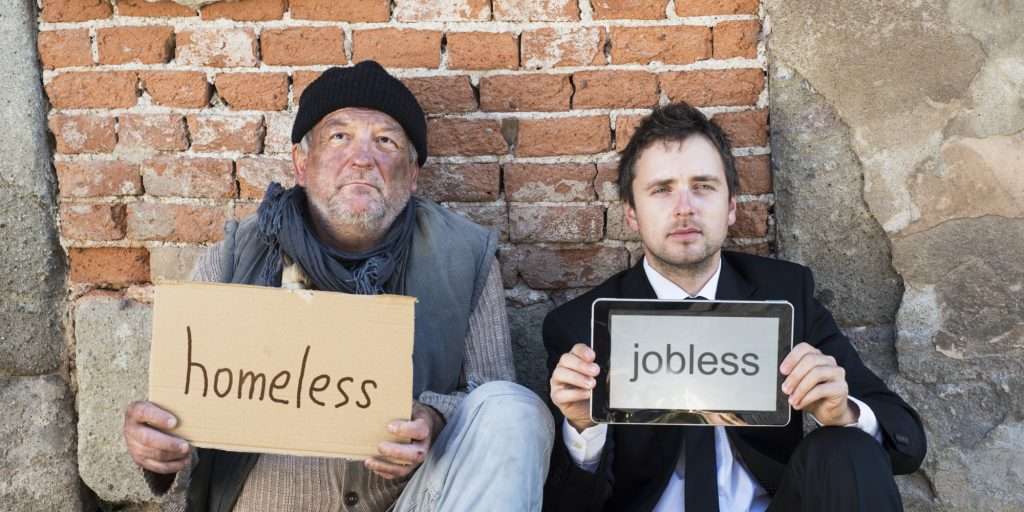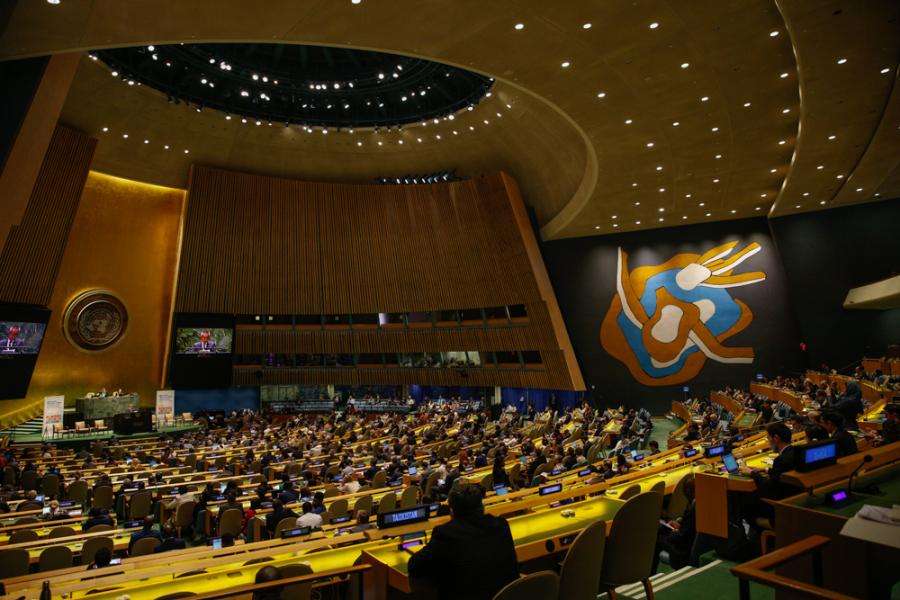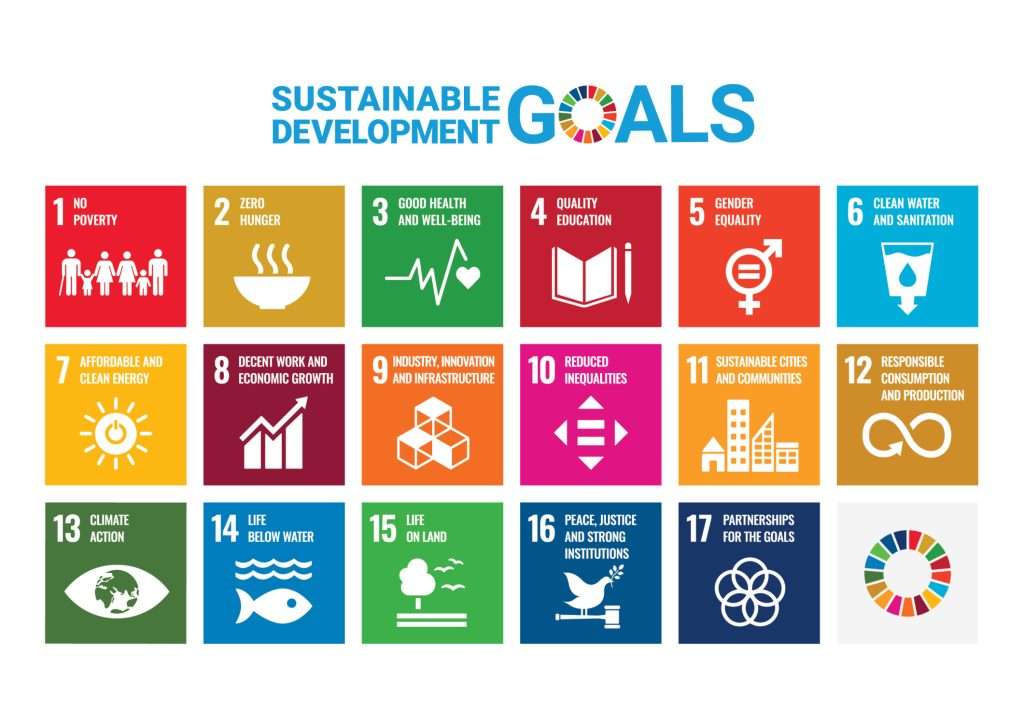Index:
- What Are Complex Wicked Problems?
- How Are Wicked Problems Different From Other Problems?
- A Closer Look At Some Complex Wicked Problems
- How Might We Address Complex Wicked Problems?
- Moving Forward
- Why Is It Essential That We Focus On Complex Wicked Problems?
- Achieving The United Nations Sustainable Development Goals (SDGs)
- A Thrivable Framework
What are Complex Wicked Problems?
We don’t live in a perfect world. Countless complex wicked problems confront us globally. The term ‘wicked’ describes some of the most challenging and complex issues of our time. A complex wicked problem is one for which each attempt to create a solution changes the understanding of the problem.
Some examples are the issues of climate change and sustainability, which are both complex. Due to the ever-changing nature of the systems within which they exist, it is difficult to solve these challenges in a simple or final way.

Source: Forbes.
How are wicked problems different from other problems?
Complex wicked problems are not referred to as ‘wicked’ because they are morally reprehensible in and of themselves. Instead, the term wicked refers to the fact that many problems are hard to define, complicated, and defy conventional thinking or simple answers (Blok et al., 2016).
Courtney Johnson-Woods (2023) defines the concept of wicked problems through the following ten characteristics:
- Wicked problems are difficult to define. There is no definite formulation.
- Wicked problems have no stopping rule.
- Solutions to wicked problems are not true or false, but good or bad.
- There is no immediate or ultimate test for solutions.
- All attempts at solutions have effects that may not be reversible or forgettable.
- These problems have no clear solution, perhaps not even a set of possible solutions.
- Every wicked problem is essentially unique.
- Every wicked problem may be a symptom of another problem.
- There are multiple explanations for the wicked problem.
- Those who present solutions to these problems have no right to be wrong.
Given the above ten characteristics, challenges like hunger, lack of access to clean water, poverty, education inequality, intractable conflicts, and sustainability are considered wicked problems. Many complex wicked problems also become exacerbated by climate change. Furthermore, such problems include access to affordable healthcare, obesity, brain drain, tax havens, environmental degradation, and sustainable economic growth. These have all been described as complex problems that involve a number of different stakeholders with different views.
A Closer Look At Some Complex Wicked Problems
Poverty
According to the United Nations, “poverty entails more than the lack of income and productive resources to ensure sustainable livelihoods. Its manifestations include hunger and malnutrition, limited access to education and other basic services, social discrimination and exclusion, as well as the lack of participation in decision-making.”
Poverty is a complex wicked problem across the globe. An inability to earn or budget money is rarely the cause of poverty. Rather, some of the ways poverty can arise are poor governance, conflict, exploitation, and domestic violence. These causes of poverty, therefore, are often the results of other problems. To combat poverty, it’s essential to address its underlying causes. Furthermore, as the causes of poverty are the results of other problems, the causes of those problems would need addressing. Hence, this complexity illustrates why poverty is a challenging wicked problem.
For instance, during the COVID-19 pandemic in 2020, the global median income decreased by 4%, and people living in extreme poverty increased by 70 million. To give some perspective, this is more than twice the 2023 population of Australia. As a result, the progress, that the UN made towards Sustainable Development Goal 1, reversed.
Homelessness
Homelessness is a wicked problem with no immediate solution in sight. It is the result of many causes, often with more than one factor influencing homelessness. According to the Australian Human Rights Commission, things such as poverty, unemployment, and a shortage of affordable housing can all cause homelessness. Furthermore, other factors causing homelessness include family breakdown, mental illness, sexual assault, addiction, financial difficulty, gambling, or social isolation.
Hunger
Like many complex wicked problems, Poverty is an issue that results from other complex wicked problems and goes on to cause more complex wicked problems, such as hunger. As a result, a person living in poverty wouldn’t be able to afford food. The COVID-19 pandemic exacerbated the issue of hunger, forcing people into poverty. COVID-19 caused increased poverty, which in turn caused more hunger. There is a complex cause-and-effect chain of events in wicked problems.
In fact, living in poverty isn’t the only barrier to food, as money is not always the primary issue. For example, food supply chains deliver the food to us from where it was grown, farmed, or fished. There are multiple components to a food supply change, such as production, transportation, and purchase by consumers. Disruptions to food supply chains can result in food scarcity. Pandemics, wars, natural disasters, climate change, drought, flooding, and logistical issues can all disrupt the food supply chain.
Malnutrition
Hunger doesn’t always end with not having a full belly. Indeed, an even more vicious manifestation of hunger is malnutrition. According to the World Health Organisation malnutrition is about the “deficiencies, excesses or imbalances in a person’s intake of energy and/or nutrients“. Malnutrition can be life-threatening. At the very least, prolonged malnutrition results in stunting in children and wasting in adults.
Education Equality
According to Lincoln Bernard, education inequality is a complex and wicked problem in the United States of America. Bernard says that neither the causes nor the solutions are obvious. Part of the problem lies in the funding and investment of the education system. The funding in the education system is local, Bernard informs, and the redistribution of funds is unequal. This often means that the disadvantaged get left behind while those who enjoy privilege receive even more privilege.
Another facet of the complex wicked issue of education inequality is children with special physical, intellectual, or behavioural needs. Furthermore, there are children who are of an ethnic minority. In many instances, these children are singled out by the education system for special attention, assistance, and support. Often, they may become segregated in the process. However well-meaning this is, it causes issues down the track, as the children must then face re-integration later on.
Water Scarcity
“A lack of sufficient water, or not having access to safe water supplies” is the definition of water scarcity. Water scarcity becomes a wicked problem when the demand for water outweighs the supply available. Water supply is dependent not only on the amount of water available but the infrastructure used to store, treat, and transport water to the people who use it. Cost and purity is also a factor in rendering water a complex wicked problem in nations where the infrastructure does not exist to supply their citizens. There are more than one billion people across the globe who do not have access to clean water for drinking and sanitation. Therefore, water scarcity is a huge and complex wicked problem.
Human-Induced Climate Change
Although climate change does not arise from a single event and does not cause one solitary result, human-induced climate change is a “wicked problem par excellence” (Wohlgezogen, McCabe, & Osegowitsch, 2020). Indeed, this is so because “its causes are multiple and complex, its impacts are uncertain and interrelated, and potential solutions to climate change might well cause further problems.” Climate change does not arise from one single event and does not cause one solitary result.
Fossil Fuels
When we burn fossil fuels to create energy, or we fell trees, carbon dioxide (CO₂) escapes into the air. These emissions are greenhouse gas emissions (GHGs). The GHGs trap the sun’s heat in the Earth’s atmosphere, making Earth a much warmer place. When temperature rises, this causes fluctuations and variations in the weather, upsetting the ecosystem. According to Caltech (n.d.), some “observable evidence of rapid climate change include:
- Global temperature rise
- Warming ocean
- Shrinking ice sheets
- Retreating glaciers
- Decreased snow cover
- Sea level rise
- Declining Arctic sea ice
- Extreme weather events
- Ocean acidification”
The burning of fossil fuels releases GHGs, and finite resources, such as coal and oil, become depleted. We use fossil fuels to make energy for electricity and fuel for transport. These fossil fuels are non-renewable resources. It takes thousands of years for these resources to form. Organic materials such as dead plants and simple organisms make coal and oil. Burning these fossil fuels is one of the largest contributors to greenhouse gases.
Humans are the only species on Earth to burn fossil fuels for energy. This is why this sort of climate change is a complex wicked problem. Humanity needs the energy from the fossil fuels burned to get from place to place, to remain warm in the winter and cool in the summer, to store food, and to cook. Humans are the original cause of this problem, but they also contain the solution. However, we have yet to find a sustainable one that does not cause other problems in the solutions wake.
Trees
Trees are a natural carbon sink. According to Anita Lin, 2021, “carbon sinks are systems that absorb more carbon from the atmosphere than what they release”. She also says that “trees store carbon in their branches, stems, leaves, bark and roots.” Photosynthesis is when a growing tree removes carbon dioxide from the atmosphere and releases or breathes out oxygen. Trees use the carbon dioxide they breathe in to make wood. When a tree burns down or rots, the carbon stored within it discharges back into the atmosphere.
Through logging, another human activity, we lose access to carbon storage, although the logging itself does not release the CO₂ into the atmosphere. On average, a tree removes about 10 kilograms of carbon dioxide per year for the first 20 years that they grow.

Source: Medium.
How might we address Complex wicked problems?
Wicked problems are multi-layered, multi-faceted, dynamic, and subjective. Consequently, from the viewpoint of understanding the problem, a ‘solution’ remains tricky. Indicative of the characteristics of wicked problems, there are often a lot of possible solutions to consider. Many of these solutions take into account unique regional factors alongside expected and unexpected effects and outcomes locally, regionally, and globally.
In any case, before jumping into action to seek results, a deep understanding of these problems is always necessary. Furthermore, innovative thinking, strategic and holistic collaboration, and cross-sector partnership are also vital components of solving complex wicked problems. All considered, they can go a long way toward helping with creative solutions.
Next, we have a technique known as Backcasting. Backcasting represents a planning methodology that is valuable when dealing with intricate problems, especially where current trends contribute to the issue. It excels in managing complex challenges that entail numerous trade-offs, offering a dependable, systematic, and well-coordinated approach. This method allows us to tackle multifaceted problems by adopting a comprehensive, systems-thinking strategy, and thereby address what we commonly refer to as humanity’s hard-to-solve systemic or wicked problems.
moving forward
The interconnectedness of today’s society and the environment means that we should view such societal and environmental problems holistically. Problems are intertwined in existing systems—such as manufacturing systems and economic systems, political, social, and cultural systems, and technological and legal systems — and each of those systems is connected with the other.
Again, while the concept of wicked problems itself contains multiple characteristics that produce significant challenges for decision-making, the intellectual ante has been raised with the idea of ‘super wicked problems’ (Levin et al., 2012). This concept describes critical policy issues confronting contemporary governments. Like the concept of wicked problems, this concept encompasses several characteristics which are:
- Time is running out;
- There is no central authority, or only a weak central authority, to manage the problem;
- The same actors causing the problem seem to solve it; and
- The future is discounted radically so that contemporary solutions become less valuable.
For this, the element of time bears greater significance than in the original conception of wicked problems. This time element is most apparent with climate change, for which there are several clear and compelling predictions of irreversible harm if there are no significant policy interventions. Many other problems cited as wicked problems do not, however, have such clear time constraints (Peters, 2017).

Source: IISD.
Why is it essential that we focus on complex Wicked Problems?
In light of the increasing complexity and demands of the growing population, the challenge of solving wicked problems has become more important than ever.
Wicked problems play out on global, local and community, as well as individual levels. Because there is no obvious fix, proposing solutions (and challenging those solutions) often plays a prominent role politically and institutionally. Consequently, these wicked problems influence the missions and operations of governments, corporations, and organisations worldwide. Certainly, in cases involving natural resources and ecosystems, the consequences of these problems and proposed solutions might carry irreversible implications.
Understanding the interconnectedness of things allows us to make better judgments and question our long-held views. This open-minded perspective and ability for critical thought will also help engage the unsure population that is sceptical about change and deterred by the criticism associated with radical positions.
achieving the United Nations Sustainable Development Goals (SDGs)
The UN Sustainable Development Goals (SDGs) is a plan of action to stimulate systems change between 2015-2030. The five areas of crucial importance are people, planet, prosperity, peace, and partnership. This Agenda for Sustainable Development provides a structured framework for addressing a wide range of wicked problems that affect global sustainability and well-being.

Image: Sustainable Development Goals
Undoubtedly, each of the 17 SDG topics aligns with the description of goals reframed from wicked problems. We live in a world burdened by large-scale problems that won’t go away: poverty, lack of access to healthcare, gender inequality, intense natural disasters, violent extremism, terrorism, land degradation, freshwater scarcity, loss of biodiversity, increases in global temperature due to climate change, and others. While not all of the challenges addressed by the SDGs are wicked problems, many of them exhibit characteristics of wickedness due to their complexity, uncertainty, and the need for collaborative, adaptive, and holistic approaches to finding effective solutions.
A Thrivable Framework
The THRIVE Framework is a trans-disciplinary, holistic model that analyses critical sustainability issues and explores sustainable solutions for societies to flourish. At its core, ‘sustainability’ simply means the ability to continue to survive. ‘Thrivability’, by contrast, is the next step beyond sustainability. Being sustainable does not imply choosing A over B just because B is bad and A is good. Rather, it’s about adjusting the root of our actions so that knowledge of the interconnectedness and complexity of our present systems drives our choices.
The THRIVE Framework predicts the sustainability performance of strategies and operations by integrating the 12 THRIVE Foundational Focus Factors. Complex Wicked Problems is a Foundational Focus Factor belonging to the ‘Scope’ quadrant in the Systemic Holistic Model for thrivable transformations. This quadrant highlights one of the shortcomings of several approaches to sustainability that have been used up to this point, centred around the narrow-minded bottom-up approach to sustainability impact measurement.

Source: The Systemic Holistic Model
At THRIVE, we believe that humanity can do better with the knowledge currently available to us. To learn more about how The THRIVE Project is researching, educating, and advocating for a future beyond sustainability, visit our website. You can follow our informative blog and podcast series and learn about our regular live webinars featuring expert guests in the field. Sign up for our newsletter for regular updates.